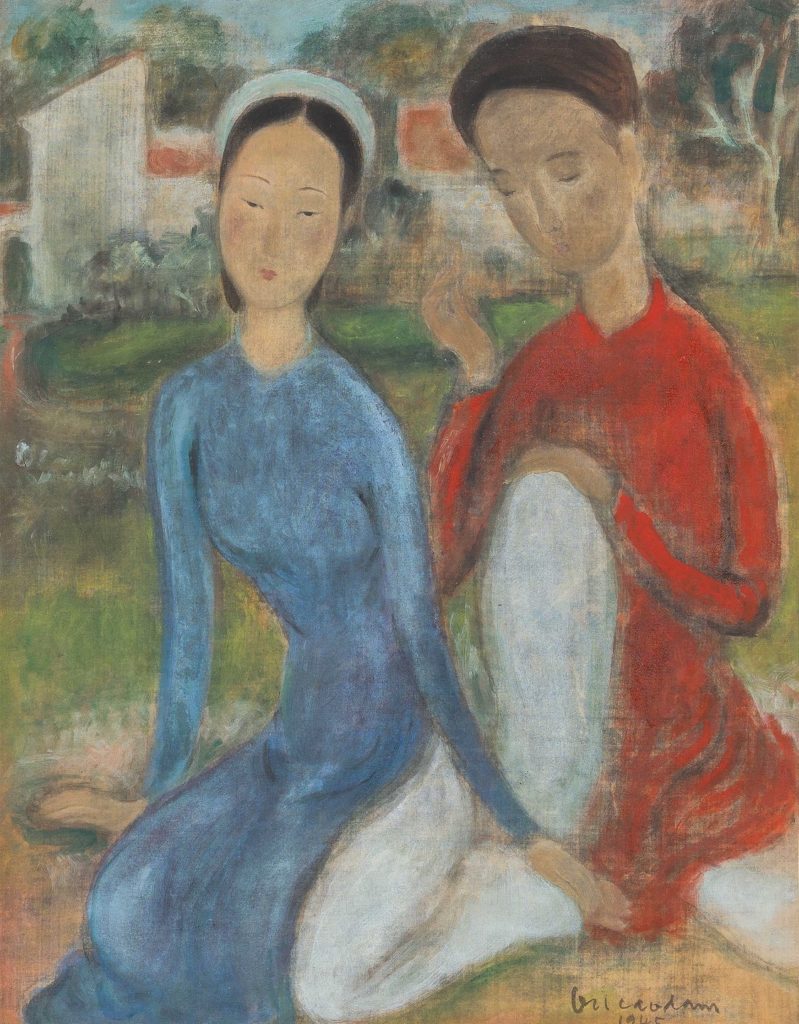Vu Cao Dam and the Temptation of the Western World « Couple » – 1945
Although this painting is a clear depiction of a man and a woman, and one of Vu Cao Dam’s favorite subject matters (he was often inspired by the Kim Van Kiêu), the three main colours in the painting, blue, white and red, also happen to be the colours of the French flag. This is not accidental, as it might seem, at least not in 1945.
In the year 1945, the execution of this subtle painting is fundamental not only for its historical context but also by the artist’s personal correlative evolution. Michel Vu, Vu Cao Dam’s son, has kindly accepted to comment on the particular context around this painting:

« From 1941 to 1946, I lived in Marsilly, with my mother and my sister, one hundred kilometers from Paris. My father used to come and visit us on his bicycle ».
During the difficult years of war, the artist lived alone in Paris and chose to move his family to an area that did not suffer as much from rationing. His only concern was the creation of his work. In the 14 years previously spent in France, Vu Cao Dam perfected his techniques as a painter as well as a sculptor.
But a major artist is always the moral witness of his time: the victory over the Nazis in this year, 1945, and the return of peace found in France galvanized the painter. He was not a passive traveller but a cantor guiding alterity, as shown in his work.
The firm lines, the gouache colours are more pronounced than usual. While, the construction remains truly Tonkinese: the woman’s ao dai , the man’s tunic and the headdresses are all quintessentially Vietnamese.
The couple’s bodies are seemingly close and affectionate and they transcend the Confucian classical rules of modesty. The transmutation takes place in the artist: the gesture becomes influenced by the Western world and the young lady is the interpreter.
Couple, a major and rare historical painting that illustrates the words of the painter himself.
« Today multicultural and multiracial expressions are sought but I think I was among the first to try, in my work, to reconcile my oriental roots, without disrupting tradition, with my perception of the lessons given by studying the masters of western culture ».
Jean-François Hubert